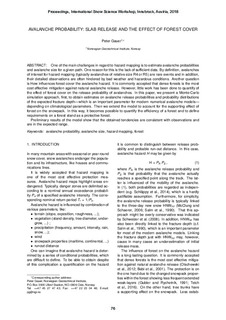Avalanche probability: Slab release and the effect of forest cover
Lecture
Published version
Permanent lenke
http://hdl.handle.net/11250/2583849Utgivelsesdato
2018Metadata
Vis full innførselSamlinger
- NGI articles [1026]
Originalversjon
http://arc.lib.montana.edu/snow-science/item/2490Sammendrag
One of the main challenges in regard to hazard mapping is to estimate avalanche probabilities and avalanche size for a given path. One reason for this is the lack of sufficient data. By definition, avalanches of interest for hazard mapping (typically avalanches of relative size R4 or R5) are rare events and in addition, their detailed observations are often hindered by bad weather and hazardous conditions. Another question is How influences forest cover the avalanche hazard. It is commonly accepted that dense forests is the most cost effective mitigation against natural avalanche release. However, little work has been done to quantify of the effect of forest cover on the release probability of avalanches. In this paper, we present a Monte-Carlo simulation approach, first, to obtain estimates on avalanche release probabilities and probability distributions of the expected fracture depth—which is an important parameter for modern numerical avalanche models— depending on climatological parameters. Then we extend the model to account for the supporting effect of forest on the snowpack. In this way, it becomes possible to quantify the efficiency of a forest and to define requirements on a forest stand as a protective forest. Preliminary results of the model show that the obtained tendencies are consistent with observations and are in the expected range.
